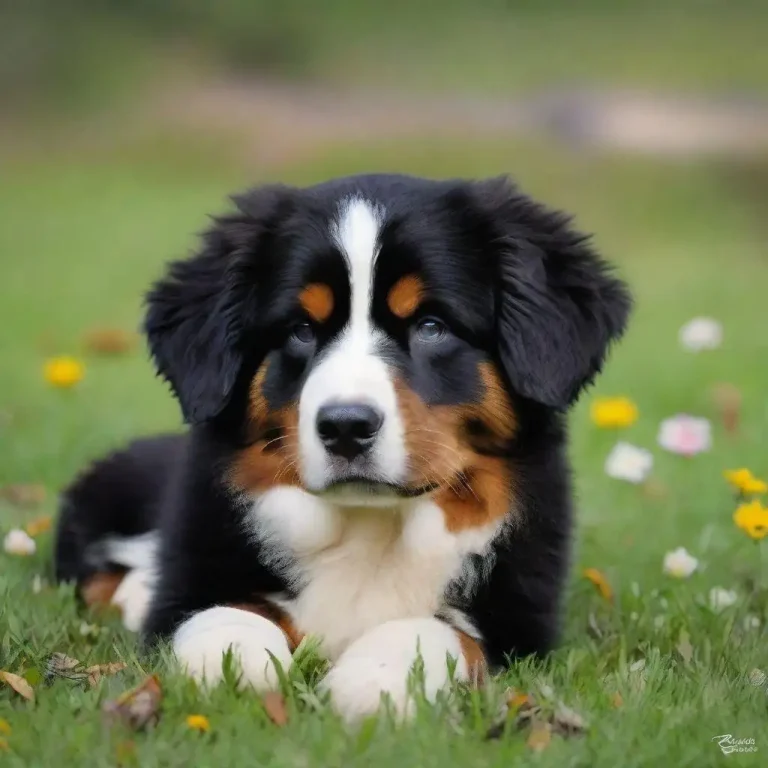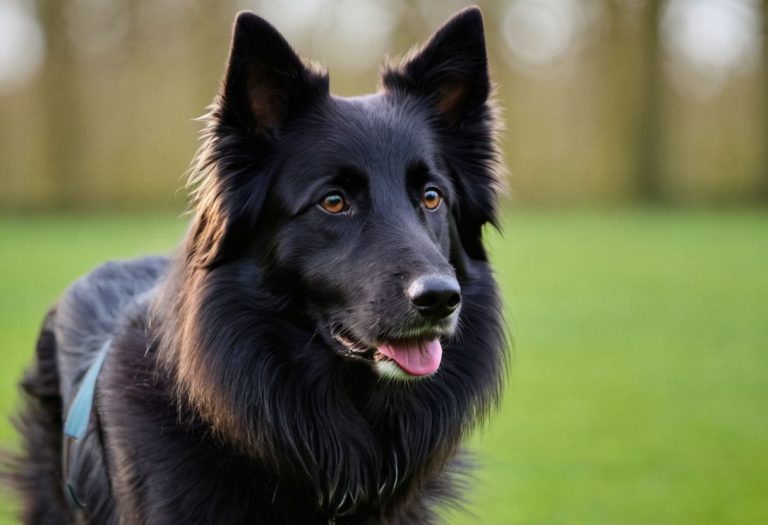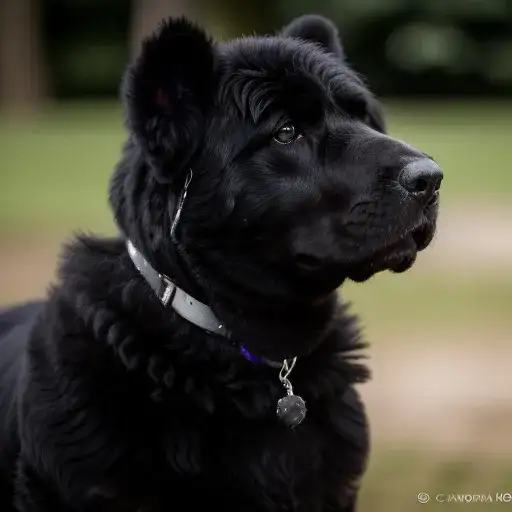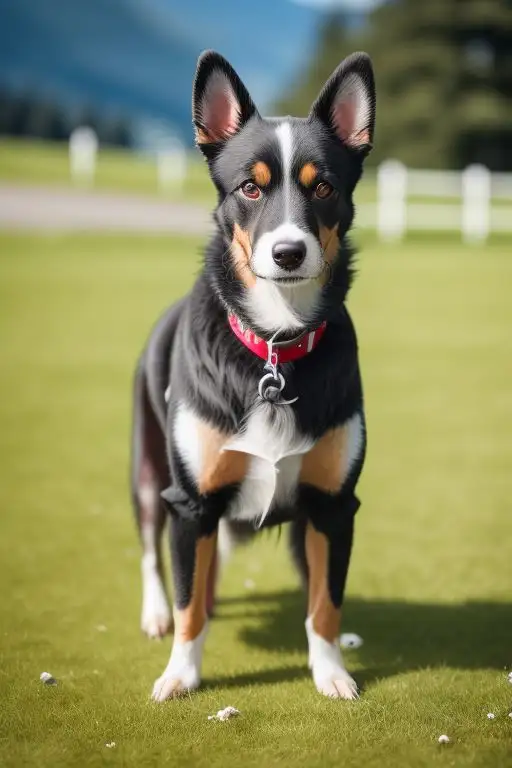OLD ENGLISH SHEEPDOG: A Furry Friend
Discover about Old English Sheepdog, known for its shaggy coat and gentle temperament, is a beloved large breed dog originating from England.
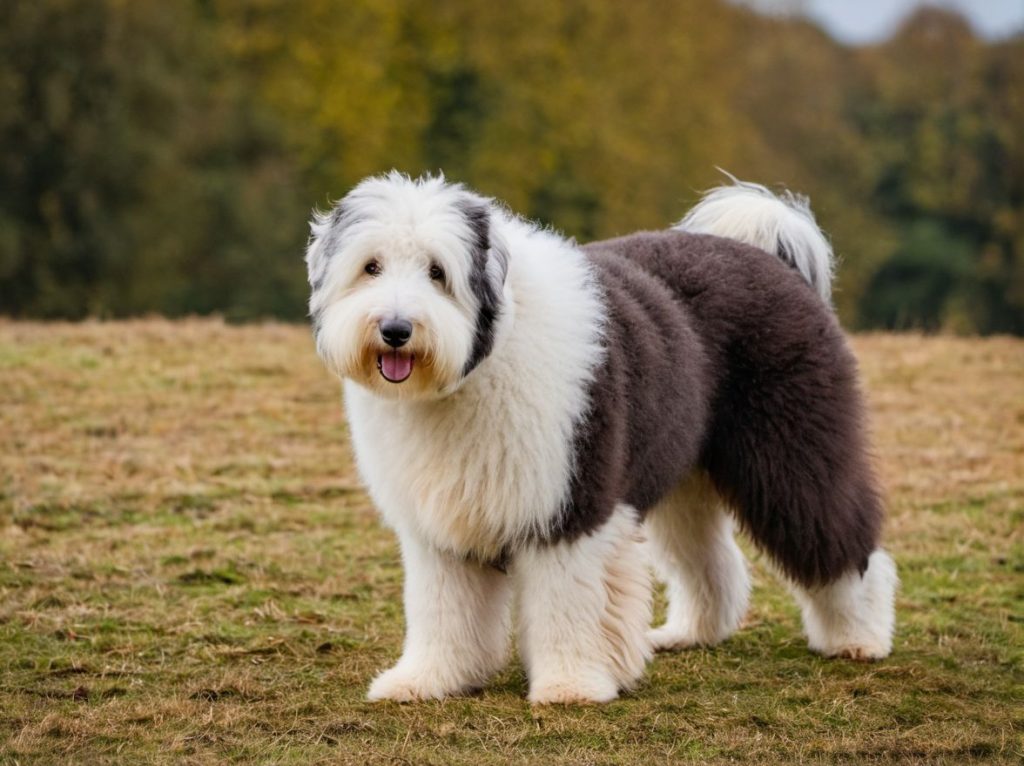
The Old English Sheepdog is a large, shaggy dog breed known for its distinctive appearance, characterized by its profuse, thick, and shaggy double coat that covers its entire body, including its face and eyes.
This Sheepdog is a loving and loyal companion that thrives in a family environment where they can receive plenty of attention and affection.
Let’s dig in to learn about their history, appearance, temperament, and care needs here.
History
The Old English Sheepdog, often referred to as the “Bobtail,” has a rich history intertwined with sheep farming in England. While its exact origins are unclear, it likely descended from various herding breeds in the early 19th century. Initially prized for its adeptness in driving cattle and guarding livestock, the breed’s distinctive shaggy coat protected it from harsh weather conditions in the British countryside.
By the late 19th century, this Sheepdog gained popularity as a show dog, with its unique appearance and amiable temperament captivating audiences. It was officially recognized by the Kennel Club in 1888.
Today, the Old English Sheepdog continues to be cherished worldwide for its distinctive appearance, intelligence, and gentle temperament.
Appearance
English Sheepdogs are large, strong, and squarely built dogs. They have a compact, muscular body covered in a long, dense coat that can be any shade of gray, grizzle, blue, or blue merle with white markings.

Physical Characteristics
Height
- Male 22-24 inches
- Female 21-23 inches
Weight
- Male 60-100 pounds
- Female 50-85 pounds
Coat
He has a dense and shaggy double coat that requires regular grooming to prevent matting and tangling.
Color
– Gray
– Grizzle
– Blue
– Blue Merle
Eyes
This sheepdog has dark and round eyes that are often hidden beneath its shaggy coat.
Ears
The ears are typically medium-sized, set high on the head, and covered in long hair, hanging close to the cheeks.
Tail
The tail is customarily docked in countries where the practice is legal; otherwise, it is left long, carried low, and often covered in thick fur, giving it a “bobtail” appearance.
Lifespan
The average lifespan is around 10-12 years.
Temperament
The Bobtail dog is known for its gentle, affectionate, and playful temperament. They are typically good-natured, sociable, and loyal companions, often forming strong bonds with their families. While they are generally friendly towards people and other pets, early socialization and consistent training are important to ensure they develop into well-behaved adults. Despite their large size, they often have a playful and clownish demeanor, enjoying games and activities with their loved ones. Additionally, they may exhibit a protective instinct towards their family members, making them excellent watchdogs.
Grooming
Grooming him requires regular attention due to its dense, shaggy coat. Brushing several times a week is essential to prevent mats and tangles from forming, particularly in areas prone to friction such as behind the ears, under the legs, and around the tail. During shedding seasons, which occur twice a year, more frequent brushing may be necessary to remove loose fur and prevent excessive shedding in the home.
Bathing should be done as needed, using a gentle dog shampoo to avoid stripping the coat of its natural oils. Additionally, regular grooming sessions should include trimming the hair around the eyes to prevent obstruction of vision and checking and cleaning the ears to prevent infections.
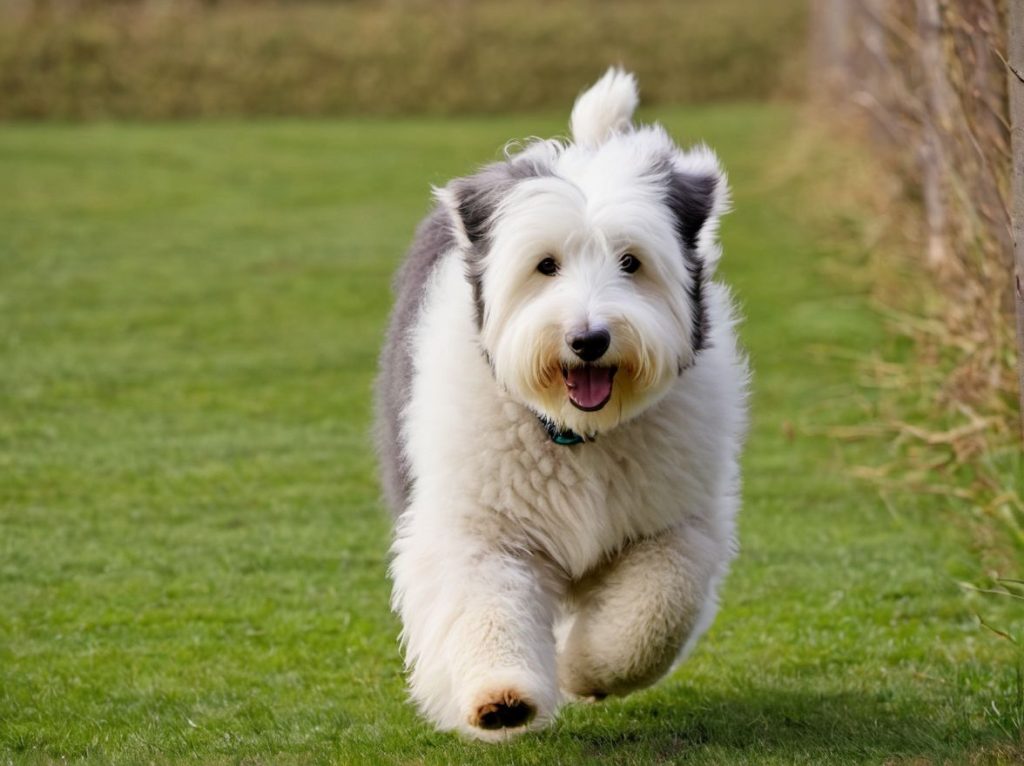
Training
Training an English Sheepdog requires patience, consistency, and positive reinforcement methods. Early age socialization is crucial to ensure they grow into well-mannered adults. Basic obedience training, including commands like sit, stay, come, and leash walking, should begin as soon as possible. Due to their intelligence and independent nature, training sessions should be engaging and varied to keep them interested.
Positive reinforcement techniques, such as treats, praise, and play, work well with them. Harsh methods or punishment-based training should be avoided as they can lead to distrust and behavioral issues. Consistency is key, and training sessions should be short, frequent, and conducted in a quiet, distraction-free environment.
Exercise
They are moderately active dogs that require regular exercise to maintain their physical and mental well-being. Daily walks, preferably twice a day, are essential to provide them with an outlet for their energy and stimulate their minds. Additionally, interactive play sessions in a fenced yard or a spacious indoor area can help keep them engaged and satisfied.
Despite their large size, these sheepdogs do not have extremely high exercise needs compared to some other breeds. However, they still enjoy activities such as fetching, hiking, or participating in dog sports like agility or obedience training.
It’s important to note that Old English Sheepdogs are sensitive to heat due to their dense coat, so exercise should be moderated during hot weather to prevent overheating.
Nutrition
Providing a balanced and nutritious diet is essential for the health and well-being. High-quality commercial dog food formulated for large breeds is often recommended, ensuring it meets their specific nutritional needs. Look for products with real meat as the first ingredient and avoid those with artificial additives or fillers.
Feeding guidelines should be followed based on the dog’s age, weight, activity level, and any specific dietary requirements or health concerns. Typically, adult Old English Sheepdogs may require around 3 to 4 cups of high-quality dry dog food per day, divided into two meals.
Additionally, incorporating healthy snacks such as fruits, vegetables, or lean meats can provide additional nutrients and serve as treats during training sessions.
Health Concerns
Old English Sheepdogs, like many purebred dogs, may be prone to certain health concerns. Some common health concerns may include:
Hip Dysplasia
It is a genetic condition where the hip joint does not develop properly, leading to arthritis and mobility issues.
Progressive Retinal Atrophy
This is a degenerative eye disorder that can eventually lead to blindness.
Cataracts
It is associated with clouding of the eye’s lens, which can impair vision.
Bloating
It is a life-threatening condition where the stomach twists and traps gas, leading to bloating and potential organ damage.
Hypothyroidism
This is a deficiency of thyroid hormone production, which can lead to weight gain, lethargy, and skin problems.
Skin Issues
They may be prone to skin allergies, hot spots, and bacterial infections due to their dense coat.
Deafness
These sheepdogs may be prone to deafness, especially those with a predominantly white coat.
Bottom Line
The Old English Sheepdog is a large, shaggy breed originating from England, known for its gentle nature and distinctive appearance. It was historically used for herding but is now valued as a loyal family companion. Regular grooming is essential due to its dense coat, and moderate exercise is required. Potential health concerns include hip dysplasia and eye disorders. With proper care, training, and attention, this sheepdog makes a wonderful and devoted pet.
FAQs (Frequently Asked Questions)
Q: Do Old English Sheepdogs shed a lot?
Yes, Old English Sheepdogs have a double coat that sheds seasonally, so regular grooming is necessary to manage shedding.
Q: Are they good with children?
Yes, they are generally good with children, but proper socialization and supervision are important.
Q: Do these sheepdogs make good guard dogs?
While they are protective of their family, these sheepdogs are not typically aggressive and may not make the best guard dogs.
Q: Are Old English Sheepdogs hypoallergenic?
No, Old English Sheepdogs are not considered hypoallergenic due to their heavy shedding.
Q: Do Bobtail dog drool a lot?
Bobtail dogs are not known for excessive drooling compared to some other breeds.
Q: Do they bark a lot?
They may bark to alert their owners but are not excessive barkers overall.
Q: Are Old English Sheepdogs good swimmers?
With their dense coat, Old English Sheepdogs may not be the most natural swimmers, but they can learn to enjoy water activities with proper introduction and training.


